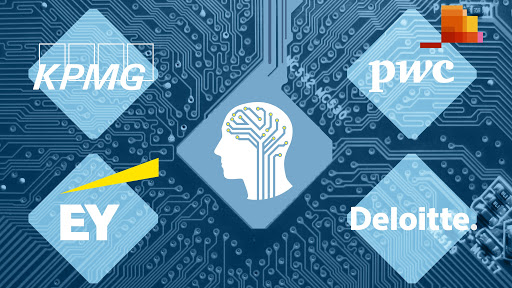The direction of auditing technology development is towards continuous audit (Rezaee et al., 2002) – “a comprehensive electronic audit process that enables auditors to provide some degree of assurance on continuous information simultaneously with, or shortly after, the disclosure of the information”. As currently most tasks are performed manually by auditors through Excel and take significant time to complete, large investments are made on innovating the industry, through AI or other similar technologies. The advantages of implementing AI in audit processes are optimization of repetitive tasks, lowering costs of processing, a more profound level of financial statements analysis, and a higher level of employee satisfaction due to more engaging tasks and less routine (Fagella, 2020). Most breakthroughs on the audit sector, developed primarily by the Big Four companies, are in the fields of text mining procedures, expert systems, and process modelling (Rezaee et al., 2002).
– Data mining for fraud detection of financial statements – currently fraud detection is done by analysing manually samples of client’s transactions. AI can use larger samples of data more efficiently and analyses with more precision, given that the right criteria are set (PwC Global, 2019a).
– NLP and OCR – the fields of Natural Language Processing and Optical Character Recognition become more important, as it allows the reading and processing of large amounts of standardized PDF documents, such as invoices, contracts, or internal decisions (Fagella, 2020). This task is currently performed manually by auditors, taking the extremely long time to process every document one be one.
– Miscellaneous –drones for stock-counting, blockchain, Robotic Process Automation programs, etc. (Fagella, 2020).
PwC (PwC Global, 2019b) estimates AI to have potential for consumption impact of 3.3, on a scale of 1 to 5. This is mainly based on the fact that there is a lot of data available in this sector, simplifying the processing ability of AI. On the other hand, personalization for each customer and time saved are estimated to be on average, as consumer trust and regulatory acceptance would be required to implement the programs at full potential (PwC Global, 2019b).
References
Fagella, D., (2020, April 3). AI in the Accounting Big Four – Comparing Deloitte, PwC, KPMG, and EY. Emerj. Retrieved from https://emerj.com/ai-sector-overviews/ai-in-the-accounting-big-four-comparing-deloitte-pwc-kpmg-and-ey/
PwC Global. (2019a). PwC Global – Harnessing the power of AI to transform the detection of fraud and error. Retrieved from https://www.pwc.com/gx/en/about/stories-from-across-the-world/harnessing-the-power-of-ai-to-transform-the-detection-of-fraud-and-error.html
PwC Global. (2019b). PwC Global – Sizing the Prize. Retrieved from https://www.pwc.com/gx/en/issues/data-and-analytics/publications/artificial-intelligence-study.html
Rezaee, Z., Sharbatoghlie, A., Elam, R., & McMickle, P. (2002). Continuous auditing: Building automated auditing capability. Auditing, 21(1), 147-163.


wow this is super interesting thanks for sharing this great content. Out of curiosity do implementing an AI based auditing function would remove the need for a lot of their employees do you think it will happen soon?
According to someone working in this industry, AI and RPA can replace up to 70% of auditing tasks, thus the threat of losing jobs is imminent. But nevertheless, full-scale implementation of such programs is done currently only on a trial basis in a few countries and will take at least 10 years to see significant improvements. Also one thing to consider is that normal auditing jobs may be lost, but new jobs will be created to monitor and program the new technologies. So overall, the sector is just in a transformation phase (less radical than other sectors)